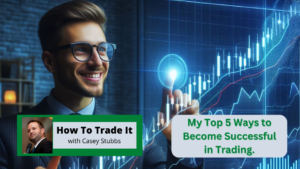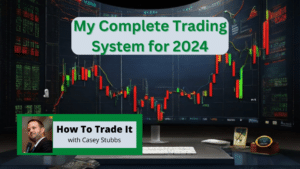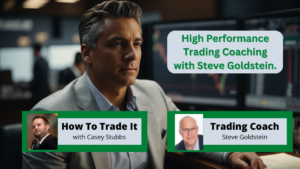Join The Option Professor, Jim Kenney, As He Shares 35 Years of Knowledge & Experience, Ep #135
Jim Kenney, fondly known as The Option Professor, is a graduate of Boston College & Don Bosco Prep. He received his options training at the Chicago Board Options Exchange (CBOE) and several major investment firms. Jim has traded thousands and thousands of options contracts in various markets and has educated numerous investors worldwide on the use and risk associated with options. In this episode of How To Trade It, Jim discusses the benefits and risks for both beginners and experienced traders. You don’t want to miss it!
When the gold market collapsed, and Jim Kenney shifted to the stock market, he was immediately drawn to options because of the potential he saw. Join us on this episode of How To Trade It to find out more! #Options #Calls #Puts #Volatility… Click To Tweet
Subscribe to How To Trade It
Episode Sponsor:
A new type of trading with Kalshi. Check it out, to get started today.
You’ll want to hear this episode, if you are interested in…
- [01:35] Gold!
- [02:15] The move toward Options
- [06:25} Leverage
- [09:00] Let’s talk about risk
- [10:06] The beauty of the BUY side
- [12:13] Like the 3 point field goal
- [13:11] The 6 month option vs. the 2 year option
- [13:51] “Out-of-the-money”
- [18:39] Steps for beginners
- [19:54] The importance of sizing
- [22:22] Volatility
- [23:10] Elevated prices
- [24:58] One-on-one training sessions
- [31:04] Getting your money off the table!
- [32:36] Education is key
- [34:11] Probability
The Draw of Options
When the gold market collapsed, and I shifted to the stock market, I was immediately drawn to options because of the potential that I saw. You could do a lot with them…ride them, buy them, take in the cash, speculate, use them as insurance…I was fascinated and completely hooked.
What is an option anyway?
An “option” gives you the right to buy or sell a market at a certain price (called the striking point) for a certain period of time (called the expiration date). When I first started trading, the expiration date was always (and only) the third Friday of each month. With the proliferation of trading, the universe of option expiration dates has expanded, almost to a point of ridiculousness. If you buy an option, you must pay the premium (the cost of an option). If you are buying a call option, you are anticipating that the value of the stock is going up. If you are buying a put option, you anticipate the market going down.
Buying a Call
Here’s an example…you are looking at Apple, and it’s trading at $150 per share. If you buy a call option, you are buying the right to purchase the Apple stock for a set amount of time (let’s say 90 days), and you will be charged a $5 premium. You get the right, not the obligation, to purchase 100 shares of Apple at $150, that’s the striking price, for $5 x 100 shares…so $500 is your risk. That is what you will pay to leverage $15,000 Apple stock ($150 x100, right?) Now, if the Apple stock goes up, during your “90 days”, the intrinsic or “real” value also goes up. If that stock goes up to $170 per share, and you have the right to buy it at $150, you are now $20 “in-the-money” per share. $20 x 100 shares is $2000, minus your original $500 premium for buying the “option”, leaving you a with a profit of $1,500. That’s a pretty sweet deal. There are risks, of course.
Resources & People Mentioned
- 7 Best Ways to Trade Options (FREE eBook)
Connect with Jim Kenney, The Option Professor
- Website: https://www.optionprofessor.com
- YouTube: https://www.youtube.com/channel/UCaTmVArwmVjenxLVrSQSJrw
- Email: optionprofessor@gmail.com
Connect With Casey Stubbs
- Website: https://caseystubbs.com
- YouTube: https://www.youtube.com/TradingStrategyGuides
- YouTube: https://www.youtube.com/caseystubbs
- Twitter: https://www.twitter.com/caseystubbs
- Facebook: https://www.facebook.com/TradingStrategyGuides
- LinkedIn: https://www.linkedin.com/in/caseystubbs/
Subscribe to How To Trade It
Disclaimer: Trading carries a high level of risk, and may not be suitable for all investors. Before deciding to invest you should carefully consider your investment objectives, level of experience, and risk appetite. The possibility exists that you could sustain a loss of some or all of your initial investment. Therefore, you should not invest money that you cannot afford to lose. You should be aware of all the risks associated with foreign exchange trading, and seek advice from an independent financial advisor if you have any doubts.






